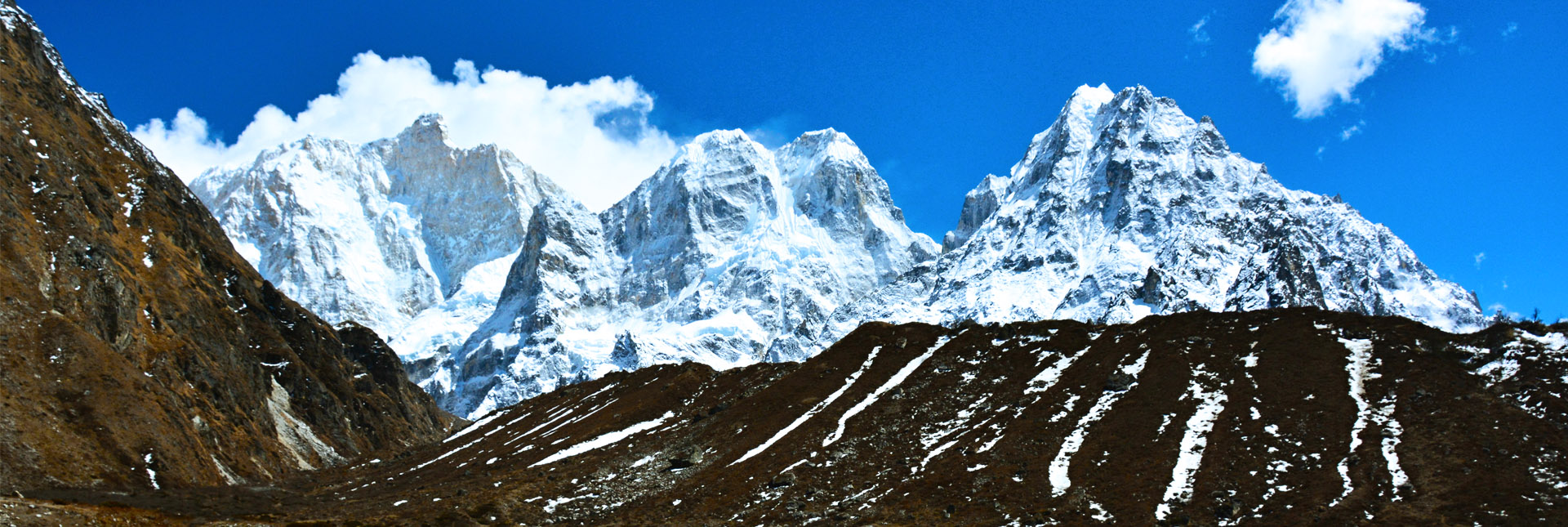29 December, 2020 | Reccy Guide

While Everest may hold the world’s attention for being the tallest mountain, Kanchenjunga scrapes the sky at 8,500 meters, making it the third tallest peak globally – and the second in the Himalayas. The Kanchenjunga base camp trek provides wanderers the chance to see the world-renowned, dramatic ranges that line Nepal’s eastern border with India and Tibet. This three-week-long adventure requires no climbing, but still offers some of the most fantastic views in the world.
Explore trip Itineraries, accommodation, transport, required gear, fitness plan, insurance and more
Kanchenjunga is located at the far eastern side of Nepal. It’s name means “five treasures,” a double entendre. Some consider each of its five mountain peaks to be rich with actual treasure—gold, silver, precious stones, grain, and scripture. Others consider the mountain top itself to be sacred. Many mountaineers stop just short of the summit out of respect to this holy mountain.
To reach the starting point of the trek, travelers will start in Kathmandu, the capital city. All treks must obtain permits and be led by a certified guide. The trekking group will fly east of Kathmandu to Bhadrapur before commuting by Jeep past orchards of tea plants, to the eastern Himalayan gateway: Taplejung. This important trading city has much to offer, and many groups will spend a day exploring its bustling streets.
 Towards Kanchenjunga Base Camp
Towards Kanchenjunga Base Camp
After departing Taplejung, the walking portion of the Kanchenjunga Base Camp trek begins. Your first days will take you through villages filled with bamboo and mud brick houses. The Tamur river accompanies this part of your journey, where it feeds nearby terraced farmland and rice paddies. Upon arriving in Chiruwa village, you’ll meet the Limbu people who have been farming in this region for over 2,000 years. Each night, you will likely stay in a tea house.
Teahouses are typical accommodations for trekkers; in each village, these cozy buildings are run by local families and provide shelter and meals to their lodgers. There may be several nights where you will stay in a tent, but these are provided and managed by your touring company. This lodging system offers the opportunity for more trekkers to enjoy the landscape. While there is still a degree of physical fitness required, there is no need to carry backpacks in excess of ten to fifteen kilograms.
Over the next several days, you walk through varying landscapes. Expect to see giant boulders, meadows and pastures filled with Yaks, and smaller Sherpa and Tibetan settlements. You’ll be treated to bright bamboo and rhododendron forests that are dotted with cascading waterfalls. By the time you reach Ghunsa, you’ll be in need of a rest day. This provides you time to acclimatize to the higher altitude and learn about Buddhist traditions at the local monasteries.

Panoramic views of the Himalayas lie just ahead. You’ll soon see Jannu, Nepal Peak, and Twins, and get your first glimpse of Kanchenjunga itself. There are actually two base camps to visit on this trek—the north camp and the south camp. It is customary to visit the northern one first, then backtrack a short way before heading further east to reach the south camp.
The north base camp provides a stunning view of Kanchenjunga, which rises above this snow-capped landscape and dwarfs its fellows, Tent Peak and Cross Peak. Afterward drinking in these mountain vistas, you’ll head for the southern base camp, which lies several days’ journey away, on the opposite side of Kanchenjunga.
You’ll cross through five high mountain passes, each with their own spectacular viewpoints, as well as meander past meadows, lakes, and more villages. Upon reaching the south base camp, you’ll head across glaciers to Oktang. This viewpoint provides one of the best panoramas of the trip, fully displaying the wonder of Kanchenjunga and the Himalayan range.
Thereafter, it is time to make the journey to the end of the trek. You’ll have the peaks at your back as you trek through lush forests and diverse villages, until you reach Khanidingbe and lodge for the night. In the morning, you’ll bid farewell and head back toward Kathmandu. Don’t be surprised if you’re soon tempted to head out on another Himalayan adventure.

The Hampta Pass Trek is one of the lesser-known Himalayan treks in India. Nonetheless, it is an amazing adventure that takes you through some jaw-dropping landscap…...
1 March, 2022 | Reccy Guide

If you want to see a different side of India, the Valley of Flowers Trek is an absolute must. Forget about the sprawling cities and urban sights, the Vall…...
14 July, 2021 | Reccy Guide

Northern India is packed full of many wonders and hidden natural gems. One such place is the glorious lake of Brahmatal. This alpine lake sits at a lofty height of 3240m amidst a crown of epic Himalayan mountains such as Trishul, Hati Ghoda, and …...
14 July, 2021 | Reccy Guide

The Goecha La Trek offers a challenge and is a longer trek for those who want to push themselves physically. Over the course of 10 days, you will traverse through s…...
14 July, 2021 | Reccy Guide

The Sandakphu Trek provides something completely different from most Himalaya treks. You get to see some beautiful countryside and natural landscapes in Singalila …...
14 July, 2021 | Reccy Guide

The Winter Kuari Pass Trek is perhaps best known for offering travelers a rare glimpse of the Nanda Devi, which stands at a dizzying height of 25,643′. Alth…...
13 June, 2021 | Reccy Guide